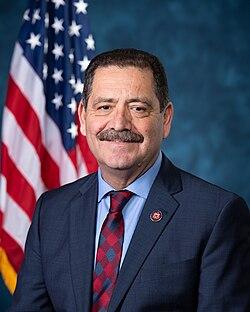Chicago’s Urban Growth Spurs Urgent Need for Transit Infrastructure Overhaul
Chicago is experiencing a notable resurgence in population, reflecting a revitalized economy and renewed urban energy. This demographic upswing presents both opportunities and challenges,especially in the realm of public transportation. As more residents settle in diverse neighborhoods, the question arises: will policymakers commit to upgrading and expanding transit systems to accommodate this growth? This article delves into the evolving transportation landscape in Chicago, highlighting the critical influence of legislative choices on the city’s future mobility and equitable advancement.
Rising Population Exerts Pressure on Chicago’s Transit Systems
The recent surge in Chicago’s population is placing meaningful demands on the city’s public transit network, revealing longstanding deficiencies that have been insufficiently addressed. Neighborhoods previously considered peripheral are now attracting new residents, yet the current bus and rail services are struggling to meet increased ridership.Commuters frequently encounter overcrowded vehicles, extended wait times, and service interruptions, underscoring the urgent necessity for system upgrades and capacity expansion.
Primary Obstacles Confronting Chicago’s Transit Infrastructure
- Antiquated subway infrastructure unable to accommodate peak passenger flows
- Limited bus routes failing to connect rapidly developing residential zones
- Chronic underfunding hindering essential modernization and network growth
- Growing maintenance deficits threatening operational reliability
| Year | Population Growth Rate (%) | Transit Budget Allocation ($ Millions) |
|---|---|---|
| 2018 | 1.2 | 450 |
| 2020 | 2.1 | 470 |
| 2023 | 3.5 | 480 |
Despite mounting challenges, recent legislative sessions have shown only modest increases in funding for the Chicago Transit Authority (CTA). Experts warn that without decisive investment, the city risks stagnation and further degradation of transit quality, disproportionately impacting low-income communities that rely heavily on public transportation. Expanding transit capacity is essential not only to accommodate growth but also to promote lasting and inclusive urban development.
Evaluating Political Will Behind Public Transit Funding Expansion
The political landscape surrounding public transit funding in Chicago is complex and marked by competing priorities. While city leaders and transit advocates emphasize the critical need for system expansion and modernization, many legislators grapple with budget constraints and diverse constituent demands. State and local budget proposals often favor incremental improvements over thorough infrastructure projects, reflecting a cautious approach that has raised concerns among urban planners and environmentalists.
Factors Shaping Lawmakers’ Transit Funding Decisions
- Fiscal restraint amid ongoing pandemic recovery efforts
- Influence from suburban constituencies with lower public transit dependency
- Frequent political turnover disrupting sustained transit policy advocacy
| Region | Population Growth (2020-2024) | Increase in Transit Funding |
|---|---|---|
| Downtown Chicago | 8.5% | 3.2% |
| West Side | 6.1% | 1.8% |
| South Side | 4.0% | 0.9% |
| North Suburbs | 3.7% | 2.5% |
The uneven distribution of transit funding relative to population growth highlights a growing disconnect between community needs and investment priorities. Without stronger legislative commitment, Chicago’s public transit system may struggle to keep pace with the city’s evolving mobility demands.
Investing in Public Transit: A Driver for Inclusive and Sustainable Urban Growth
Addressing Chicago’s transit challenges requires a strategic and equitable approach. As the city expands, enhancing connectivity-especially in historically underserved neighborhoods-is vital. Robust investment in transit infrastructure can catalyze economic development by shortening commute times and improving access to employment, education, and healthcare. Failure to adequately fund transit risks deepening social inequities and hindering balanced urban growth.
Transit advocates highlight several key advantages of prioritizing public transportation funding:
- Eliminating transit deserts to ensure reliable service across all communities
- Reducing environmental footprint by lowering car dependency and emissions
- Stimulating local economies through enhanced access to commercial and job centers
- Promoting sustainable urban density that supports walkable, vibrant neighborhoods
| Investment Area | Expected Benefits |
|---|---|
| Extending rail networks | Enhanced regional accessibility |
| Implementing bus rapid transit (BRT) lines | Quicker, more dependable service |
| Upgrading transit stations | Improved safety and accessibility |
| Affordable fare initiatives | Greater ridership among low-income populations |
Strategic Pathways for Chicago’s Sustainable Transit Future
With Chicago’s population on an upward trajectory, the imperative to modernize and expand public transit infrastructure intensifies. Policymakers must champion comprehensive, integrated transit networks that seamlessly connect neighborhoods and offer a viable alternative to private vehicles. Priorities should include expanding rapid transit options, increasing bus service frequency, and incorporating environmentally friendly technologies such as electric buses and energy-efficient trains to alleviate congestion and reduce carbon emissions.
Key strategic focuses for sustainable transit development include:
- Equitable investment to improve transit access in marginalized communities
- Technological innovation for real-time service updates and enhanced rider experience
- Public-private collaborations to boost funding and foster innovation
- Long-range planning that integrates climate resilience and urban growth projections
| Focus Area | Recommended Action | Anticipated Result |
|---|---|---|
| Infrastructure | Revamp stations and tracks | Enhanced safety and operational efficiency |
| Accessibility | Expand transit coverage to underserved neighborhoods | Improved equity in ridership |
| Technology | Deploy real-time tracking systems | Better service management and user experience |
| Funding | Engage in public-private partnerships | Accelerated project delivery and innovation |
Conclusion: The Road Ahead for Chicago’s Transit and Urban Growth
As Chicago’s population continues to climb, the urgency for lawmakers to address the city’s transit infrastructure needs becomes increasingly critical. While demographic trends suggest promising economic prospects, the allocation of sufficient resources toward public transportation remains uncertain. The policy decisions made in the near future will considerably influence Chicago’s urban fabric and the daily lives of its residents. Both community stakeholders and policymakers must collaborate to ensure the city invests in a transit system capable of supporting its dynamic and growing population.







